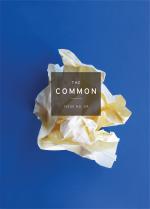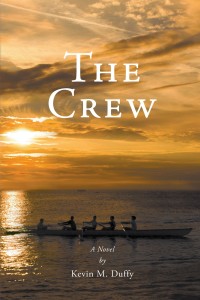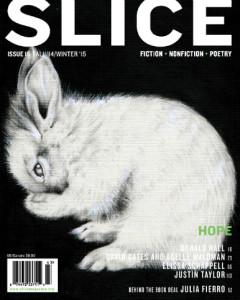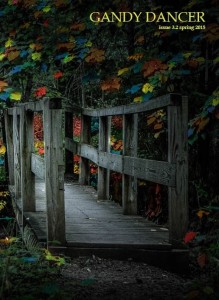Posted by Demetria Monachino, Fiction Reader and Art Curator for Issue 4.1
Before working on the Gandy Dancer, I didn’t know what a literary journal was. I didn’t know that there were publications out there dedicated to collecting individual works by writers and artists. I just sort of thought that one wrote a book–a novel, a collection of short stories or poems, a memoir–sent it to publishing houses, and got lucky. I knew that some people wrote short stories, essays, and poems, but I didn’t know where those works went, where they belonged, if not in a book.
It turns out that these pieces of literature find their homes in literary journals all over the world, one of which is The Common. Based in Amherst, Massachusetts, The Common has a rather uncommon goal: to achieve “a modern sense of place.” Unique to the world of literary journals, The Common is all about location, location, location.
 Upon first look, The Common has a striking appearance. Its readers know that when the receive their issues they can expect a minimalist, modern, and clean-looking journal that features a bold color and a “common” object on the cover, along with The Common’s signature square logo. What readers can’t predict is what exactly that eye-catching color and everyday object will be. I find that The Common’s consistent yet unpredictable approach to the appearance of their journal mimics what can be found in the pages of the journal. Yes, readers can expect to read and view pieces with a strong sense of place, but they can never know what those places will be. Just as there are endless objects in the world to choose from, there are endless places to write about. These places could be geographical, like Issue 9’s portfolio of works centered on Bombay/Mumbai, or local, like Issue 7’s “Your Parent’s House” by Zeina Hashem Beck. Or place might provide the conflict by separating two people as it does in Masha Hamilton’s “God’s Fingernail,” in Issue 9. It could even be about searching for a place to belong or something to hold on to. This is the case with Issue “In Search of Bazena Nmcova” by Kelsy Parker, which I read in Issue 7. Continue reading →
Upon first look, The Common has a striking appearance. Its readers know that when the receive their issues they can expect a minimalist, modern, and clean-looking journal that features a bold color and a “common” object on the cover, along with The Common’s signature square logo. What readers can’t predict is what exactly that eye-catching color and everyday object will be. I find that The Common’s consistent yet unpredictable approach to the appearance of their journal mimics what can be found in the pages of the journal. Yes, readers can expect to read and view pieces with a strong sense of place, but they can never know what those places will be. Just as there are endless objects in the world to choose from, there are endless places to write about. These places could be geographical, like Issue 9’s portfolio of works centered on Bombay/Mumbai, or local, like Issue 7’s “Your Parent’s House” by Zeina Hashem Beck. Or place might provide the conflict by separating two people as it does in Masha Hamilton’s “God’s Fingernail,” in Issue 9. It could even be about searching for a place to belong or something to hold on to. This is the case with Issue “In Search of Bazena Nmcova” by Kelsy Parker, which I read in Issue 7. Continue reading →










